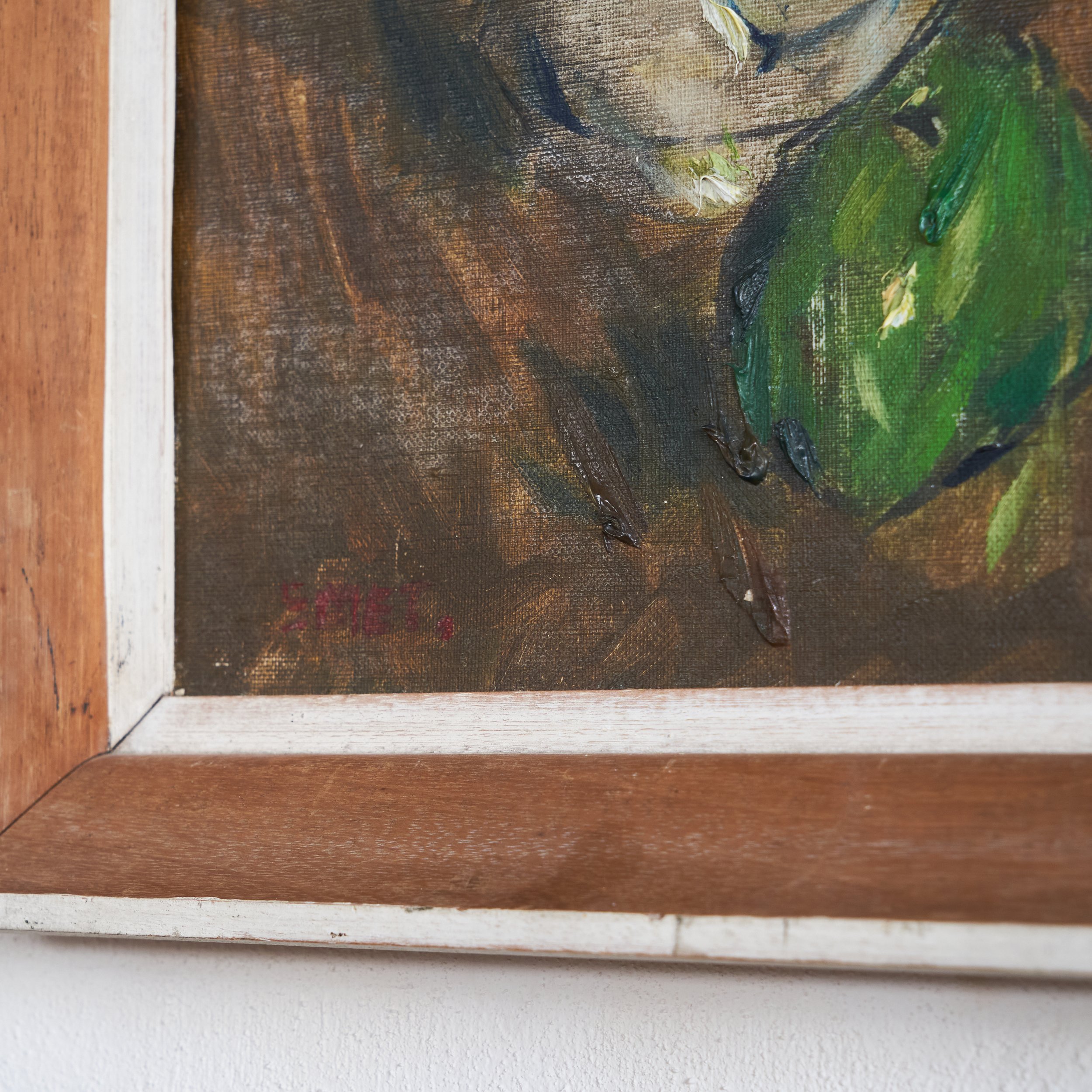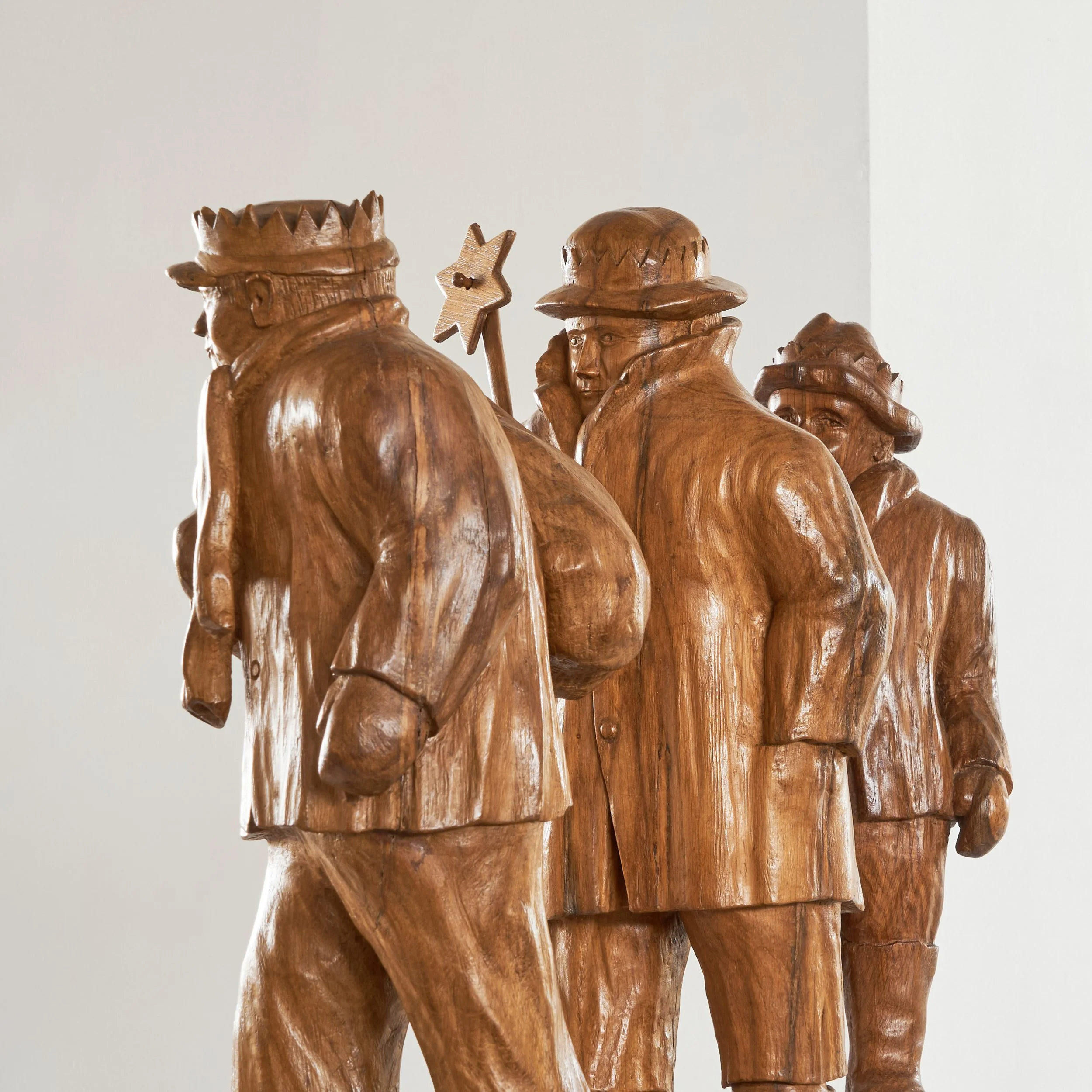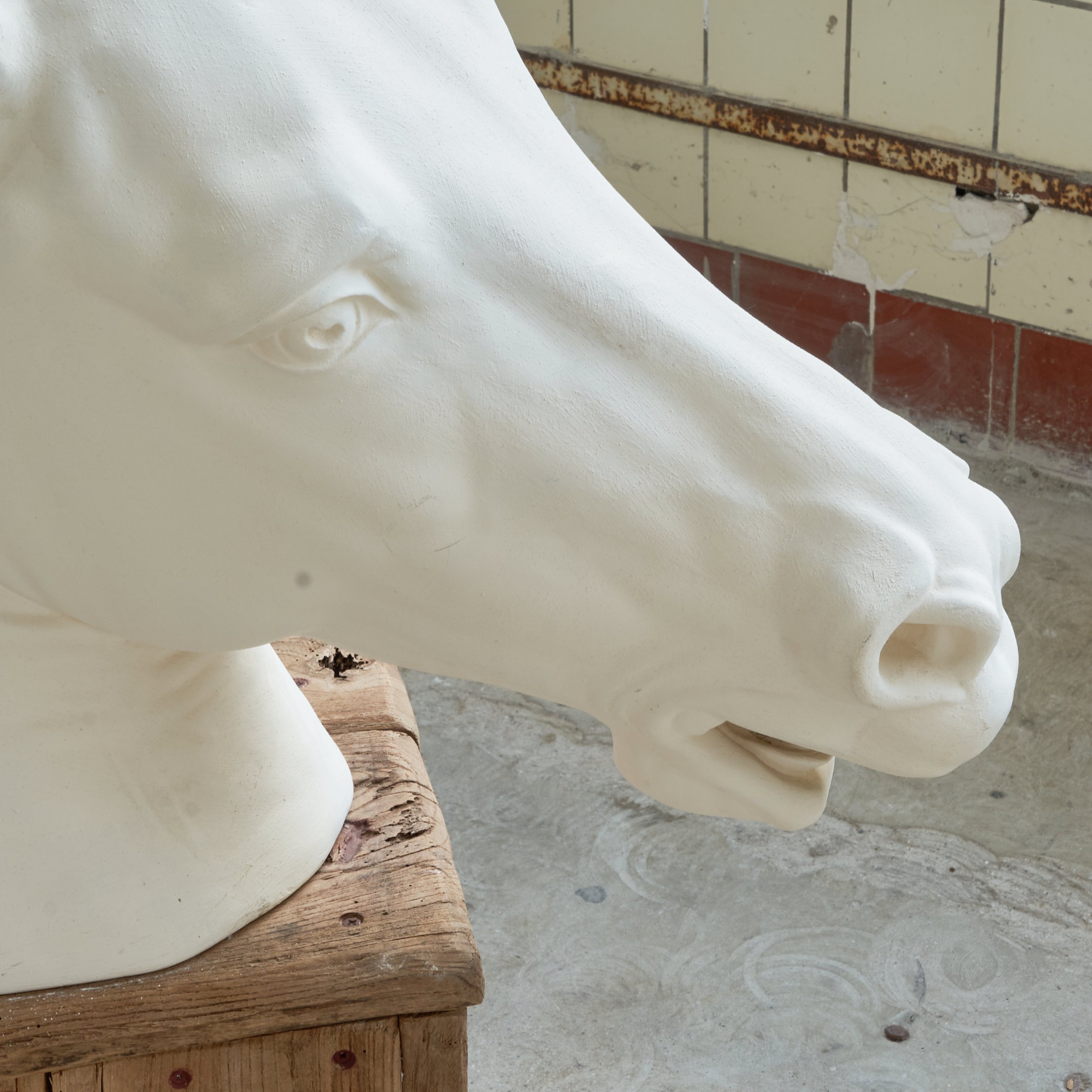 Image 1 of 9
Image 1 of 9

 Image 2 of 9
Image 2 of 9

 Image 3 of 9
Image 3 of 9

 Image 4 of 9
Image 4 of 9

 Image 5 of 9
Image 5 of 9

 Image 6 of 9
Image 6 of 9

 Image 7 of 9
Image 7 of 9

 Image 8 of 9
Image 8 of 9

 Image 9 of 9
Image 9 of 9










Gustave de Smet 'Still Life with Oil Lamp and Fruit' Oil on Board 1930s
Gustave de Smet 'Still Life with Oil Lamp and Fruit' Oil on Board, Belgium, 1930s.
Gustave Franciscus (Gustaaf) de Smet (1877-1943) was a Belgian painter who is considered one of the founders of Flemish Expressionism. His work is characterized by its bold colors, simplified forms, and rural subject matter. De Smet was born in Ghent, Belgium, in 1877. He studied at the Royal Academy of Fine Arts in Ghent, where he met Constant Permeke and Frits Van den Berghe. These three artists would become the leading figures of Flemish Expressionism. In the early 1900s, de Smet began to paint scenes of rural Flanders. These paintings were often characterized by their bright colors, simplified forms, and strong sense of atmosphere. De Smet was particularly interested in the effects of light and shadow, and he often used these effects to create a sense of drama in his paintings.
He was a member of the group known as the Latemse School, which was a group of Flemish Expressionist painters who lived and worked in the village of Sint-Martens-Latem.
Gustave de Smet 'Still Life with Oil Lamp and Fruit' Oil on Board, Belgium, 1930s.
Gustave Franciscus (Gustaaf) de Smet (1877-1943) was a Belgian painter who is considered one of the founders of Flemish Expressionism. His work is characterized by its bold colors, simplified forms, and rural subject matter. De Smet was born in Ghent, Belgium, in 1877. He studied at the Royal Academy of Fine Arts in Ghent, where he met Constant Permeke and Frits Van den Berghe. These three artists would become the leading figures of Flemish Expressionism. In the early 1900s, de Smet began to paint scenes of rural Flanders. These paintings were often characterized by their bright colors, simplified forms, and strong sense of atmosphere. De Smet was particularly interested in the effects of light and shadow, and he often used these effects to create a sense of drama in his paintings.
He was a member of the group known as the Latemse School, which was a group of Flemish Expressionist painters who lived and worked in the village of Sint-Martens-Latem.
Gustave de Smet 'Still Life with Oil Lamp and Fruit' Oil on Board, Belgium, 1930s.
Gustave Franciscus (Gustaaf) de Smet (1877-1943) was a Belgian painter who is considered one of the founders of Flemish Expressionism. His work is characterized by its bold colors, simplified forms, and rural subject matter. De Smet was born in Ghent, Belgium, in 1877. He studied at the Royal Academy of Fine Arts in Ghent, where he met Constant Permeke and Frits Van den Berghe. These three artists would become the leading figures of Flemish Expressionism. In the early 1900s, de Smet began to paint scenes of rural Flanders. These paintings were often characterized by their bright colors, simplified forms, and strong sense of atmosphere. De Smet was particularly interested in the effects of light and shadow, and he often used these effects to create a sense of drama in his paintings.
He was a member of the group known as the Latemse School, which was a group of Flemish Expressionist painters who lived and worked in the village of Sint-Martens-Latem.

































